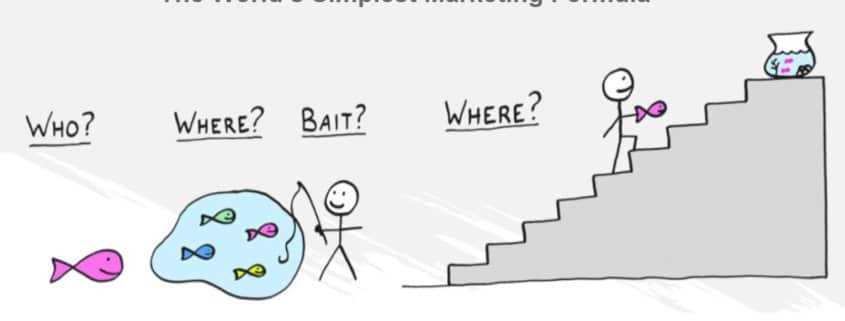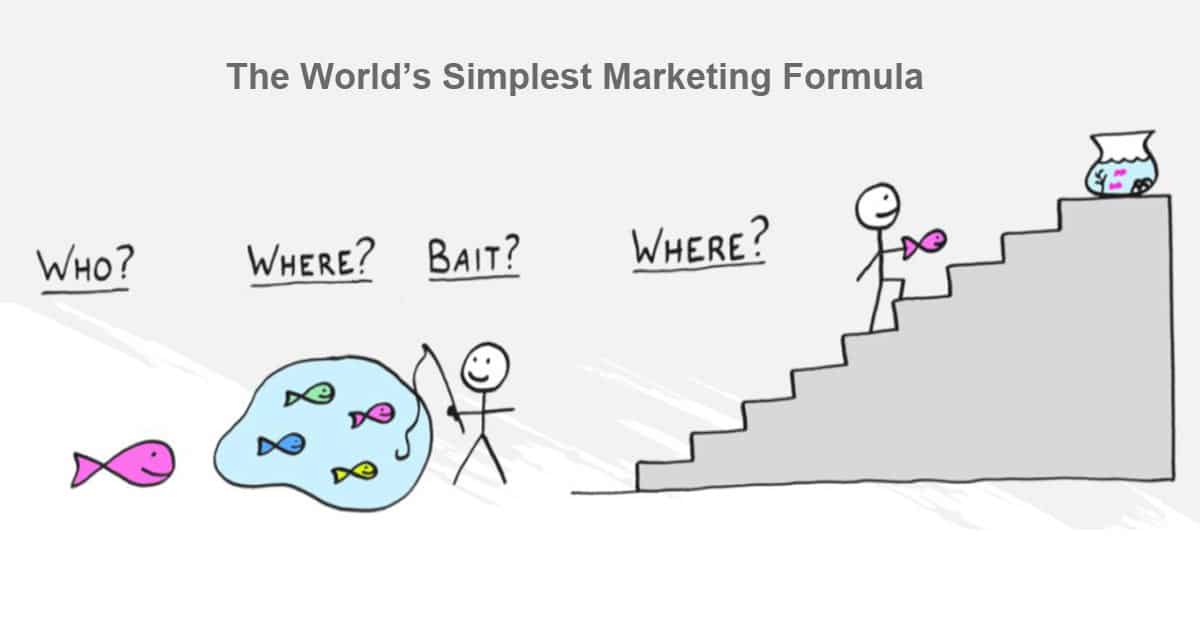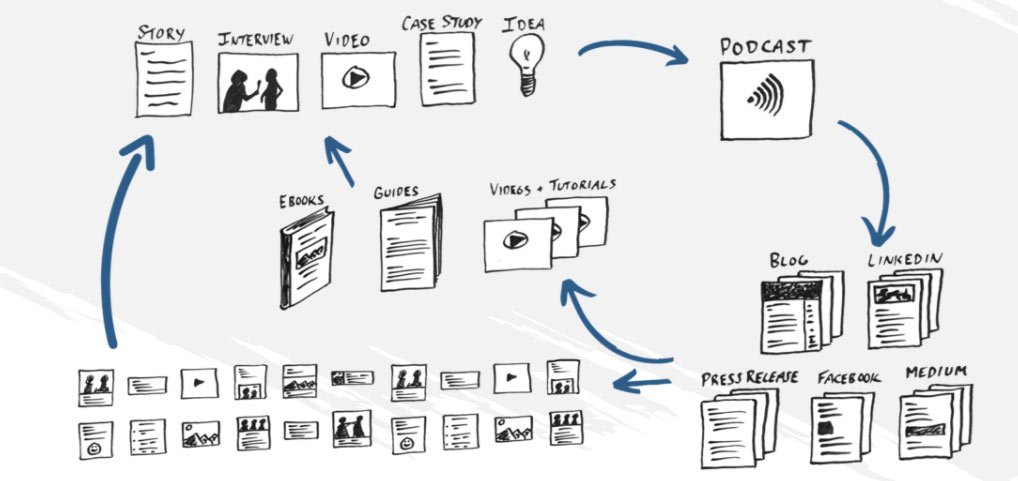Why Selling Candy Bars is Nothing Like Selling Houses
Who doesn’t love a good old chat about the considered buying process, right? Actually, it’s pretty cool stuff.
I see a lot of companies that are selling $100,000 items like candy bars and it just doesn’t work.
That’s not how people buy things that are more expensive or more “risky”.
What is a Considered Buying Processes?
A considered buying process is when we’re making a purchase decision that takes more time and consideration to pull the trigger.
Buying a $500,000 home for your family is not something you learn about today and sign on the dotted line tomorrow. We need more time to figure out our best options, right? There’s a lot more financial, business, social or emotional risk that you’re getting yourself into.
On the other hand, if you’re buying a Snickers bar, you just buy it…or you don’t. There’s no risk involved.
Take Your Time
Think of buying something like a house, or a car, or choosing where to send your kids to college. You’re going to look at stuff. You’re going to gather a bunch of information and weigh your options before you pull the trigger. You’re going to consider it for a much longer period of time.
That’s the thing…Important decisions take TIME. Quick sales pitches don’t work in a considered buying process.
Cut the Sale Pitches
It’s nearly impossible to take someone from having never heard of you to making such a huge decision in the span of one ad or communication. That’s why long-form sales letters and video sales letters are so hard to write.
Design a Ramp – from Simple to Highest Possible Value
I see so many businesses, both in the golf industry and otherwise, selling big ticket items without any “ramp up”. There’s no farm system, bunny slopes or gateway drugs leading people logically to the big stuff.
Share Your Secret Sauce
There’s nothing in place that allows somebody to get to know your company over time, and to help them process information at their own pace as they make these big decisions. Companies foolishly safeguard their “secret sauce”, and as a result aren’t delivering any value on the front end of the buying process. They aren’t winning attention.
A Better Way
50 – 75% of major buying decisions today are made before the customer even initiated contact with vendors.
You need to be competing up front, delivering value for free in the research phase if you’re going to have any real chance of driving more “at-bats” for your sales teams.
Step 1: Identify Your Customers
Who are the exact people you want to attract and do business with? I’m not talking about which companies…people.
It’s really important to know that people do business with people they trust and like…businesses don’t hire businesses. Find the decision-makers and stakeholders and go with their trust and respect. We call them Buyer Personas.
Figure out what challenges they face, questions they have, things that interest them. It could (and in many cases will) have nothing to do with your company. Don’t make it about you…yet.
Step 2: Where are They?
Where does your audience consume information? Where are they hanging out and finding answers to the questions they have? That’s where you need to be positioned.
For some businesses, this means social media – Facebook, Twitter, LinkedIn, Instagram, etc. Others are best served advertising in industry publications, or putting up billboards on highways. It doesn’t matter…just go where the attention is.
Step 3: What’s Your Bait?
This one’s easy if you’ve built your buyer personas well enough.
Your bait is going to be answers to your audience’s questions, solutions for the challenges they face.
The hard part is delivering this value to them in as frictionless a means as possible. Do they prefer video, audio, written form content? What kind of tone and language are they using? We need to “grease the skids” to earn attention and help them relate to our messaging.
You probably need to do all of the above.
Step 4: Where do you want to Take Them?
This is where the considered buying process kicks in.
Most companies fire sales pitches at their audience…”hey, buy my crap” kind of messaging. This destroys trust, and puts you on a never-ending treadmill of sales pitches. You’re not building momentum, nor are you likely driving a ton on net new business.
We need to deploy a lot more patience. We need to build a better infrastructure that accommodates a longer sales cycle…at scale. We call this Lead Nurturing
We draw them into our ecosystem by delivering value. We give them solutions to their questions and research answers for the challenges they face.
But not everyone is willing to pull the trigger on day 1.
We need a process that allows us to stay top of mind over time, until they are ready to buy. You’re able to continue delivering value in between the touches. We’re building trust and authority over time until they raise their hand and they’re ready to pull the trigger.
Golf Course Management is a Great Example
There are many golf courses out there that are struggling right now. They need help if they’re going to compete for revenue and stay in business.
Golf management companies are a logical solution for these facilities, but they don’t just go out and hire a firm immediately. Services can run into six figure ranges annually.
Frog in the Frying Pan
More typically, a club will first need to come to the realization that they even have a problem. Many don’t know it…frog in the frying pan syndrome.
From there, they’ll start considering their options. They’ll do things internally first…changing staff, budgeting, maybe spend a little capital to spice things up.
It’s a Slow Process
They’ll tinker around, and probably spend some time screwing it up…they may decide to bring in a consultant to review their operation or market position. They might consider changing ownership structure or selling the club altogether. There are endless options. They need to go through this process at their own pace until they realize that whatever they’re doing isn’t working.
Maybe, at this point they’ll consider golf course management as an option. Only then, will they begin to figure out which golf management company will be best suited for them.
Clubs don’t go from “everything’s great” to hiring a management company in 1 day…that’s for sure.
Winning Attention Up Front
As a management company, we know what it’s really important to get on the radar screen as early in the process as possible. The content we create needs to bring value contextual to what the customer is going through. Maybe we’re helping them realize they have a problem with an article “10 Red Flags that your Club is in Trouble”.
No sales pitches…they’re fruitless at this phase anyway. The idea of producing content is not too quick sell. It’s a fruitless endeavor in a considered buying process. You have to you have to bring awareness, provide minimal barriers to entry, and then you have to nurture them along in that process and allow them to make decisions on their own
Nurturing Your Audience Over Time
You need to precisely map out what the buying process looks like for your customers, then bring them helpful content along the way. This usually requires a lot of carefully crafted content…here’s how big companies craft and deploy content at scale.
Go Where the Attention is
Now, nobody says it needs to be digital content…it could be sales people making phone calls or scheduled visits. Nowadays however, marketing automation allows us to deliver helpful stuff in the places where people are most likely to consume it at scale.
Into the Ecosystem…
We build landing pages that are custom suited to whatever reason we got them to go there. If you’re trying to attract families to play golf, we want to bring them to a landing page that talks about family golf, with pictures of other families and related content.
Stay Helpful over Time
Once they’re in our “ecosystem”, we can design automated nurturing campaigns to continually deliver helpful stuff over weeks, months or even years. Maybe more golf lessons, or how to dress for success at the golf course, or how to make a tee time. Things that your audience is concerned about.
Listen Just as Much as You’re Talking
Then, based on their online and real world behavior, segment the audience into groups and deliver relevant content based on their expressed interests.
The mission is to move them along, escalating their involvement in your organization over time, at their own pace. As the progression continues, you’re earning trust, bringing value and gaining authority. In return, these customers are becoming “stickier” and the value exchange becomes greater.
Lifetime Value is the Win
The lifetime value for a loyal customer in a considered buying process far exceeds any “quick wins” you might grab with up-front sales pitches.
Final Thoughts
I’ll tell you, building brand and marketing big ticket items is not easy. But that said, the ones that create the most helpful and efficient ecosystems are winning. Once it’s all in place, light regular rhelpefinements are all it takes to optimize returns.
Additionally, the focus then shifts toward attracting as many people into the “top of the funnel” as possible…rather than sales pitching them directly to your most expensive offers.
You’re building happy, thankful customers who WANT to do business with you.
That’s when it gets really fun.
Good luck!






